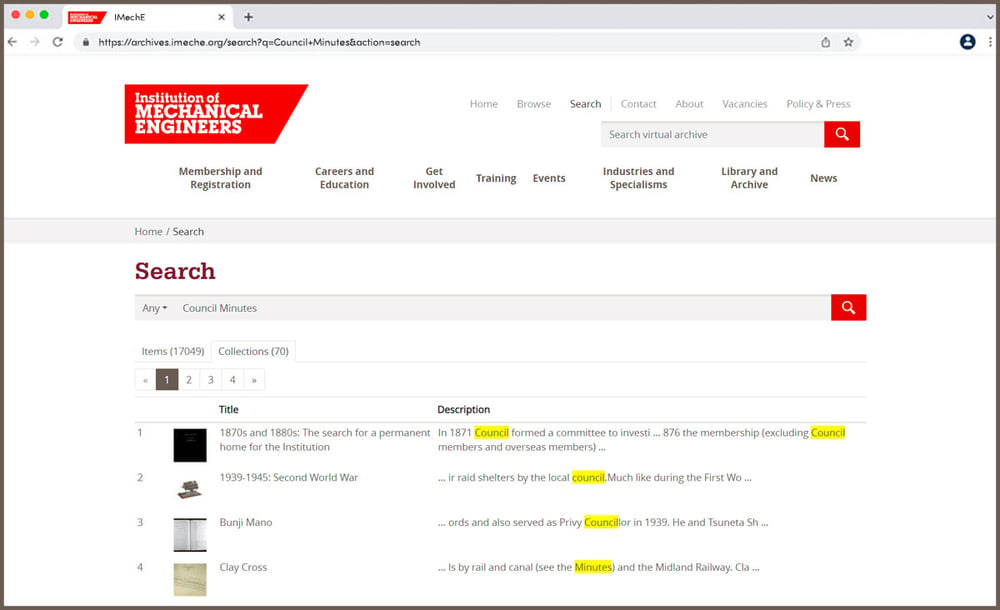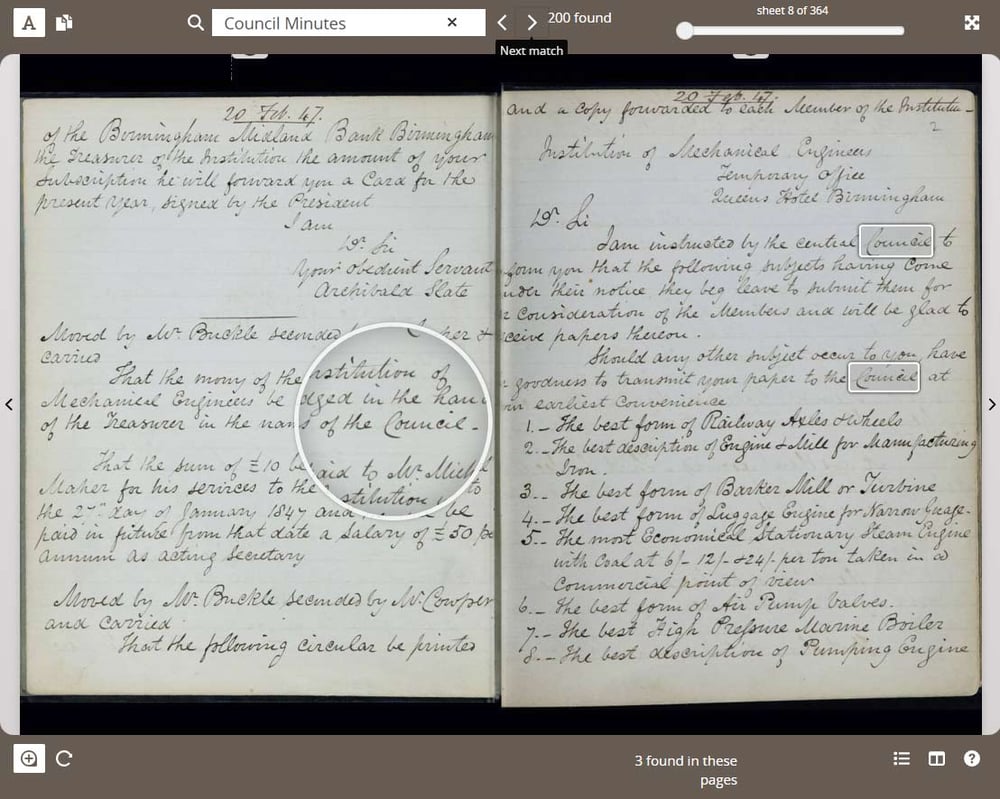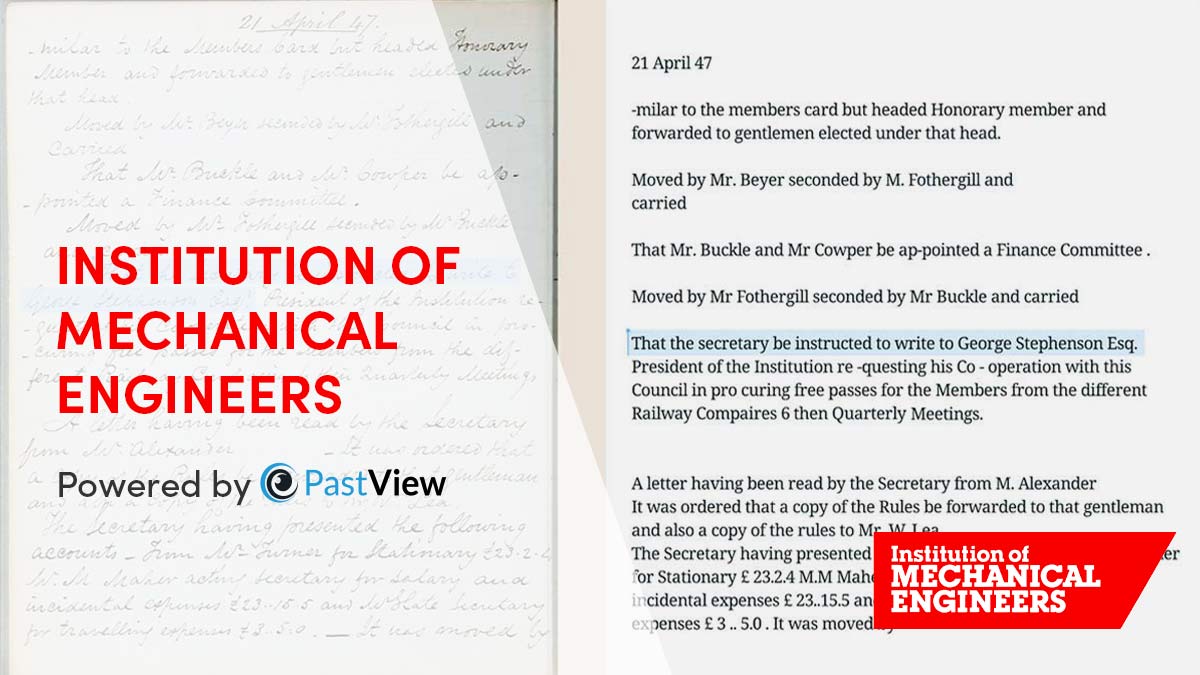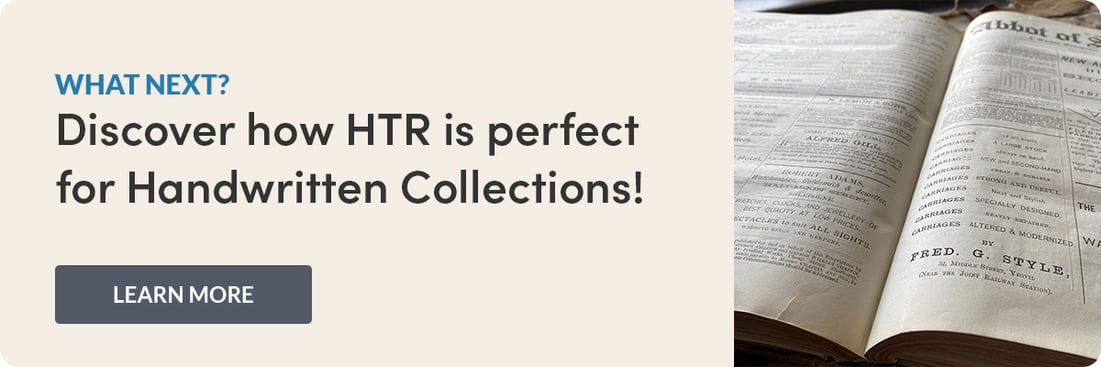PRESS RELEASE
In today's digital age, the demand for efficient and accessible archiving solutions is greater than ever. It’s why we, here at PastView, continually strive to provide leading and innovating services for our clients, and why we’re delighted to be one of the first to introduce Handwritten Text Recognition (HTR) to our repertoire.
This ground breaking technology transcribes even the oldest of handwritten texts, unlocking a wealth of information and revolutionising the way researchers access information across the globe. But rather than simply explaining the benefits of HTR, we’re shining a spotlight on one organisation that is already reaping the rewards of this technology daily. Today, hear how the Institution of Mechanical Engineers (IMechE) have had the secrets of its council minutes, dating all the way back to 1847, revealed using Handwritten Text Recognition.

Unlocking the Secrets of IMechE’s council minutes with HTR
IMechE, a prestigious global engineering professional association based in London, has been supporting mechanical engineers throughout the entirety of their careers since its establishment in 1847.
With over 115,000 members and over 175 years of history, the archive at IMechE has grown and developed over the years, holding a treasure trove of historical records, including council minutes dating back to the Institution's foundation. These minutes serve as a valuable source of information, documenting decision-making processes and offering a glimpse into the Institution's rich history.
The council minutes are regularly accessed by a diverse range of individuals, ranging from those interested in specific people, such as family history enthusiasts, to those with a broader curiosity into seeing how the Institution reacted to major events. Alas, accessing these council minutes was previously a challenge for all involved.
With the oldest council minutes handwritten rather than typed, the faded ink made it difficult for untrained eyes to decipher, even when accessing the digitised copies online. If you were able to piece the text together, locating specific information within the handwritten minutes was near impossible, proving to be a time-consuming and laborious task. Not least for those at the Institution, who had, originally, set out to transcribe the minutes manually.
IMechE quickly recognised the limitations of the traditional transcription methods, and, following their 175th anniversary, eagerly embraced the launch of Handwritten Text Recognition. As an existing and valued PastView member since 2016, IMechE were one of the first to know about this much-anticipated feature, and the timing couldn’t have been more perfect.

Handwritten Text Recognition, opening a whole new world…
Tying in neatly with the 175th anniversary, IMechE have had the first four volumes of council minutes automatically transcribed through the HTR system. These volumes include the council minutes from 1847-1857, 1858-1872, 1872-1878, and 1878-1884, amounting to approximately 2000 pages of transcribed text given a new lease of life.
This monumental step transformed the accessibility of the council minutes, making them available to anyone with a computer worldwide. The technology has made the minutes keyword searchable, making it easier than ever to quickly locate specific information within the documents. It’s not only a win for users of the archive, but for those at the Institution itself: IMechE can now efficiently retrieve information to answer enquiries, saving valuable time and effort.
PastView’s Handwritten Text Recognition service has allowed us to increase the accessibility of our earliest minutes, making it much easier to glimpse into the founding years of the Institution.
Lucy Bonner
IMechE, Archivist
So, how does Handwritten Text Recognition really work?
Handwritten Text Recognition (HTR) is a technology that converts handwritten text into digital formats, using advanced algorithms and machine learning to accurately transcribe and interpret handwriting (even Old English!)
Enhanced accessibility, preservation of historical documents, and easy searching of handwritten texts are just a few of the benefits of employing this technology. Though perhaps most importantly, for our users, HTR saves valuable time and effort by automating the transcription service.
Once transcribed, users can view the documents in the 'real feel' digital BookExplorer. They have the option to see the transcription overlaid on the original handwritten text or view them side by side. But it doesn’t stop there. One remarkable feature of HTR is its ability to extract characters from all forms of documents, and even from images. Whether it's a group photo of school kids or a logo on their jumpers, HTR captures and transcribes the smallest details, ensuring that nothing is lost in the transcription process.
With Handwritten Text Recognition, transcription is quick, easy, and no longer a daunting project.





